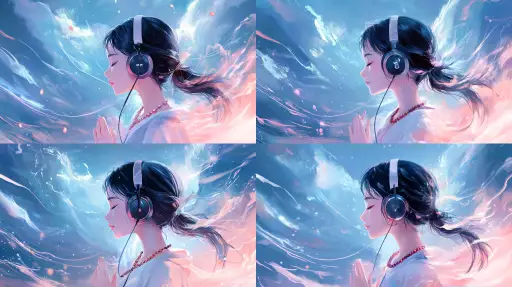Explore the Best AI Image Gallery

The Algorithmic Muse: Navigating the Ethics of AI-Generated Media
Artificial intelligence (AI) is rapidly transforming various aspects of our lives, and the creative industry is no exception. With advancements in generative algorithms, AI can now create compelling visual content, music, text, and even code, blurring the lines between human and machine creativity. This unprecedented ability raises profound questions about the nature of art, authorship, and the ethical implications of relying on algorithms to shape our cultural landscape.
A New Era of Creative Possibilities
AI-generated media offers a myriad of exciting possibilities for artists, designers, and creators across disciplines.
- Enhanced Efficiency and Productivity: AI tools can automate tedious tasks, allowing artists to focus on conceptualizing and refining their ideas.
- Novel Artistic Expressions: Algorithms can generate unique and unexpected outputs, pushing the boundaries of conventional art forms and inspiring new creative directions.
- Democratization of Creativity: AI-powered tools can empower individuals with limited technical skills to participate in the creative process, fostering greater inclusivity and diversity in artistic expression.
Navigating the Ethical Labyrinth
While the potential benefits are undeniable, the rise of AI-generated media also presents a complex web of ethical challenges:
- Authorship and Ownership: Who owns the copyright to AI-generated works? Is it the developer of the algorithm, the user who provides input, or the AI itself?
- Bias and Discrimination: AI algorithms are trained on vast datasets, which can inadvertently perpetuate existing societal biases. This can result in AI-generated content that reinforces stereotypes or discriminates against certain groups.
- Misinformation and Manipulation: The ability to create realistic fake images, videos, and audio raises concerns about the potential for malicious use, such as spreading disinformation or creating deepfakes for personal gain.
- Job Displacement: AI-powered tools may automate tasks currently performed by human artists and creatives, leading to job losses in the creative sector.
Shaping a Responsible Future
To harness the power of AI for good while mitigating its potential harms, it is crucial to establish ethical guidelines and regulations.
- Transparency and Explainability: Developers should strive to make AI algorithms more transparent and understandable to the public.
- Data Governance and Bias Mitigation: Efforts must be made to ensure that training datasets are diverse, representative, and free from bias.
- Collaboration and Multidisciplinary Dialogue** : Open discussions involving artists, ethicists, policymakers, and technologists are essential for navigating the complex ethical landscape of AI-generated media.
Future Trends
The field of AI-generated media is constantly evolving. Here are some potential future trends:
- Personalized Creative Experiences:** AI could be used to create personalized art, music, and storytelling tailored to individual preferences.
- Immersive and Interactive Art Forms**: AI-powered virtual and augmented reality experiences could revolutionize the way we interact with and experience art.
- AI as a Creative Collaborator**: Artists may increasingly collaborate with AI algorithms as partners, leveraging their unique capabilities to enhance their creative process.
Conclusion
The emergence of AI-generated media presents both exciting opportunities and significant ethical challenges. By fostering open dialogue, promoting responsible development practices, and prioritizing human values, we can harness the transformative power of AI while safeguarding the integrity and authenticity of creative expression.











](https://images.ai-img.art/thumbnails/150/4289d1230b86a96c4d556636c3167bed0ef38f850826549517e4e45db4d87bf7.webp)

](https://images.ai-img.art/thumbnails/150/008b5d5d49667cc2e93a5f8a8adfaa545963da99c39ff0901f5296294636400d.webp)


](https://images.ai-img.art/thumbnails/150/c2c9c48b38fae37f0a457b80b084ed01ba803810fc8f488c8f610c03abc74049.webp)





](https://images.ai-img.art/thumbnails/150/f9584153b4cddd8c9fab611dc10247549b275c59bc173251e37d0935874f9deb.webp)


](https://images.ai-img.art/thumbnails/150/f67d9af3398150f2ab1bcf250717fea134275e2ca896252b54a4d9bb3719f9ac.webp)







](https://images.ai-img.art/thumbnails/150/bddf3ae4a232290858389b933c866ad3be429ef2e25c23a9f4d7713ed6e44d0b.webp)







